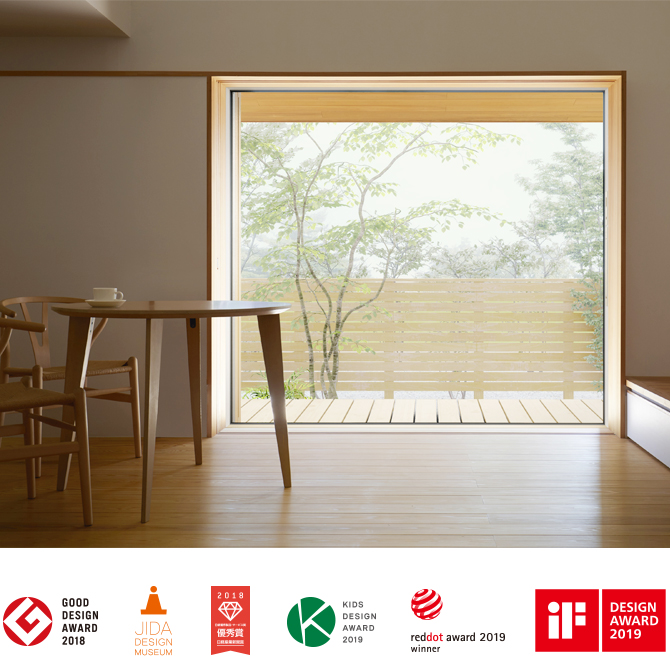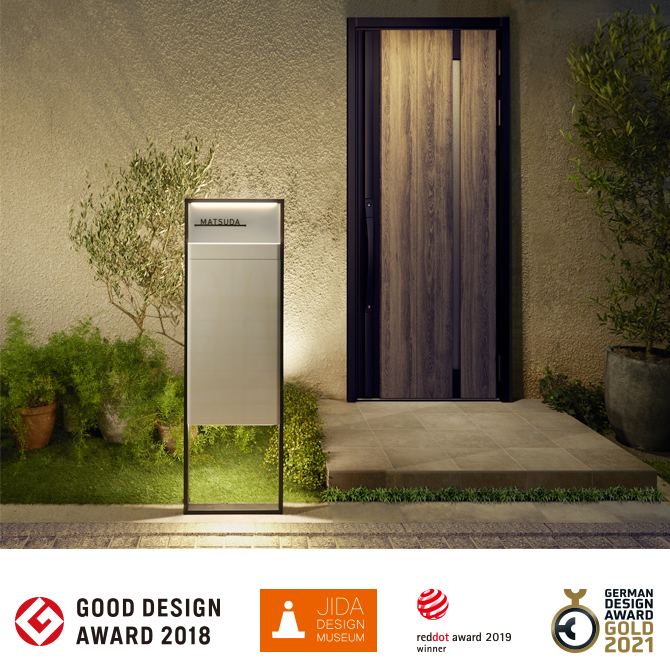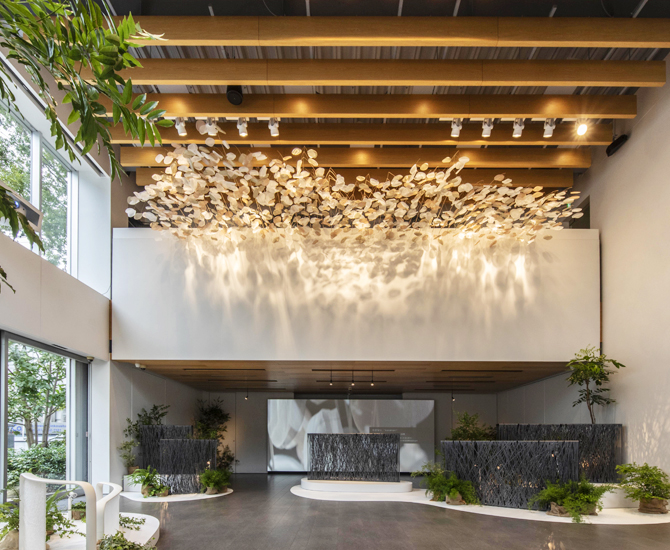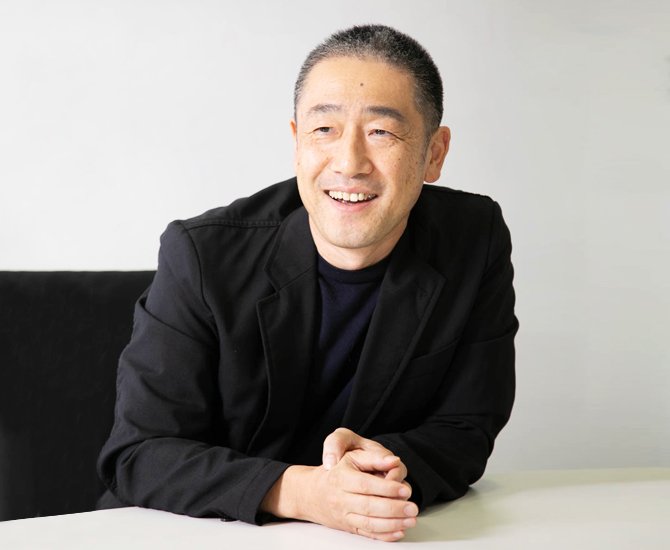LIXIL makes pioneering water and housing products that solve everyday, real-life challenges, making better homes a reality for everyone, everywhere.
- Global Site
-
- English
- Japanese
- Brand Sites
Global
- Global Site
-
- English
- Japanese
- Brand Sites

Updated: May 25, 2021.
Research from the Design Management Institute has shown that companies that make design part of their strategy have comparatively higher share price performance.¹ How can the power of design be leveraged to build brands and generate innovation? From toilets and kitchens, to windows and doors, LIXIL, maker of water and housing products has been taking on this challenge, by positioning design as a core element in its management strategy.
LIXIL has established a centralized global design team, with six major in-house design studios in Tokyo, New York, London, Dusseldorf, Shanghai and Singapore, overseen by Chief Design Officer Paul Flowers. Having design consolidated under a single organization and represented at the highest level of management within LIXIL, allows design thinking to be reflected in a unified way.
“When people in Japan buy a house, they basically plan to live in it for their entire lives,” says Yutaka Haga, leader of design at LIXIL Housing Technology(LHT), which develops housing products including window sashes, doors, exterior building materials, and interiors. “That’s why creating living spaces that are comfortable and satisfying is fundamental to what we do. We have designed all sorts of things for homes, but now our focus is also in what comes to life collectively, when our products are brought together. Because we believe that the harmony created in the home is the most important element for continued end-user satisfaction.”
Under Haga’s leadership, The LHT team in the new LIXIL Global Design studio, Tokyo has implemented design-led processes that involve designers from the initial stages of product planning. Helping to capture consumer needs accurately, and combining design and technology, LHT is accelerating development of products that generate new value.
¹ The share prices of the 16 companies that comprise the Design Value Index were approximately 2.1 times higher over the decade from 2005 to 2010 compared to the 500 corporations in the S&P500, which constitute a major share of market capitalization in the United States.
Differentiated designs as a clear demonstration of change

With a new design-centric operating structure, novel ideas have led to a succession of new products. One of these was the LIXIL Carport SC that was developed by a designer and car enthusiast who ideated a simple carport that placed focus on the vehicle.
According to Haga, “Conventional carports have a cross-shaped framework with a polycarbonate roof attached via screws, making them look heavy and very industrial. Keeping the functional benefits of a carport, LIXIL’s Carport SC’s design on the other hand, only makes the roof and supports visible. The atypical design required a completely different structure from any conventional one, so we had to coordinate with our engineers and manufacturing teams to turn it into a commercial product that also involved the developing of new technologies and design methods. The single roof of the new structure provides sufficient strength yet it is only 4cm thick and has a minimalistic design, giving the carport a bright, floating sensation that blends into its surrounding environment with an urban feel. This product really puts the parked car at center stage.”

The team also revisited the intrinsic value and role of windows. Bringing a seamless visual connection between the outside and inside, it developed the LW Series, a new lineup of windows with a non-visible frame.
“The LW Series was based on the new concept of opening and closing a single plane of glass by sliding it to the side. By adopting a hybrid aluminum and plastic structure, the window lets in a lot of natural light, for a pleasant ambience and bracing views with its ‘frameless design’ where the top, bottom, and sides of the frame are not visible from the inside,” says Haga. “And because the frame is not visible; we ofcourse needed to develop a new type of handle. It also delivers excellent thermal insulation performance.”

“The Smart Delivery Box is another good example. It stands on just two thin supports and has sufficient holding capacity, while the open space underneath gives it the impression that it is floating; unlike the conventional delivery boxes that look like the typical industrial product with a heavy feel. Its design is also harmonious with various home exteriors,” says Haga. The Smart Delivery Box has even received acclaim outside Japan, winning the top Gold prize at the German Design Awards sponsored by the German Design Council.
Design-led thinking generates new possibilities
“Before the introduction of the new design process, designers were mostly just involved in the final step of the process, after the product development had been completed. We weren’t able to deliberate on the fundamental nature of the product, and truly harness the power of design,” Haga points out. “When product development is technology-led, the tendency is to think in practical terms about what products can be made using existing technologies. However, if we start from asking what do people want, we can create new consumer centric innovations which surprise and delight our consumers and drive market trends.”

In fall 2019, the Design Center held “Aida no Ma,” a project exhibition open to the public that was LHT's first foray into advanced design. The exhibition was part of DESIGNART TOKYO 2019, a 10-day event that "transforms the entire city of Tokyo into a museum." LIXIL showcased its new design approach to a wide audience at Daikanyama, the urbane lifestyle and fashion hub of Tokyo.
“This event was a chance to directly interact with many types of people, and it gave us an opportunity to gain hints for new designs,” says Haga, reflecting on the experience. “By leveraging design and technology, we create new relationships with nature - by linking lifestyles to the outdoors. That is the vision that LHT aims to realize.”
Collaboration between design and technology strengthens the organization

Haga says that development that starts with design has improved technological capabilities, but it has also contributed to changing corporate culture.
“We’ve received a lot of feedback from end-users that the products we’re developing are exactly what they wanted, and our insights are becoming increasingly clear. Ideas are being exchanged among engineers, as well as partner companies, manufacturers, and various stakeholders involved. Everyone seems excited to work together. Even when members express doubts at first, we discuss concerns thoroughly; and when they see the light ahead, they fully embrace the concept.”
Providing value to the end-user is central to LIXIL's innovation says Haga "Its important to understand the user's thoughts, sensitivities and desires in design. Its how design generates value, and how it can be elevated as a part of our culture”
Our Stories
- Backing People and Passions to Drive Innovation
- How Toilets in Schools are Catalyzing Change in Communities
- Building the Future by Recycling the Past
- Reinventing Consumer Connections in the World's Largest E-commerce Market
- Tackling Household Water Inefficiency in a Water-Stressed World
- Plugging the Plumber Shortage
- Pioneering Solutions to a Sewage Crisis in Rural Alabama
- Meet the Citizen Developers Changing How We Work
- Design and Brand Identity Transformation at LIXIL
- Three Changes to Prepare Europe’s Sanitary Industry for Growth
- Three Steps to Creating an Inclusive Culture
- From Linear to Circular: Giving Products in Your Home a New Lease of Life
- Crafting Unique Experiences as well as Products
- GROHE X: A Digital Brand Experience
- Design-led Innovation Delivering True Value
- Responsible Use of Plastics
- Empowering our People for an Agile Future
- Turning the Waves of Change into Opportunities
- SATO Tap: a New Handwashing Solution for All
- New Ways of Working Take Flight at LIXIL
- INAX: Rituals of Water
- Refreshing our sanitation targets, standing firm on our commitments
- Developing Attractive and Differentiated Products
- Conserving Water: The New Normal
- Insulating For a Warmer and Healthier Home
- Open Kitchen, Open Communication
- Tackling Open Defecation in India
- Shaping the Future of Faucets, One 3D Layer at a Time
- Bathed in Culture and Tradition
- Remodeling the Housing Market
- LIXIL's AQUA CERAMIC makes bathroom stains a thing of the past
- The Technology of Water
- Tackling Challenges in Global Sanitation and Hygiene
